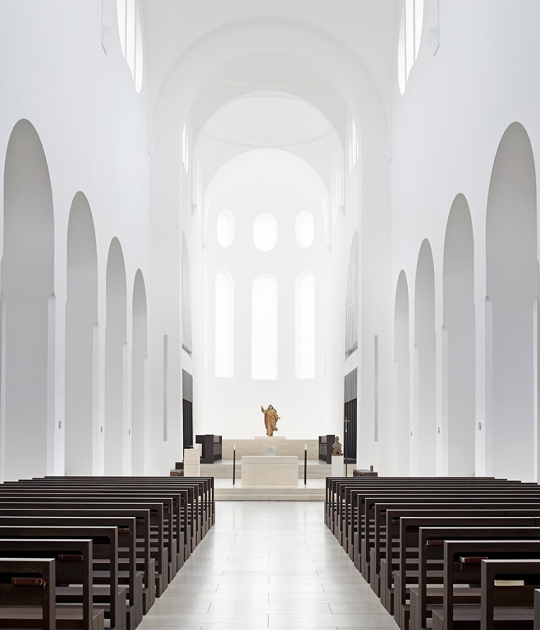The project follows a baroque pattern in the access route that allows it to play with the light and the surprise of the patio behind the altar. Accompanying this clever use of tours, is the interesting design of the roof, with its different folds and its curved tile finish.
Project description by Ricardo Yslas Gámez Arquitectos
Located in the town of San Juan Cosalá, Jalisco, Capilla RLJ consists of a religious building that is part of the master plan for a complex of events and relaxation.
Our initial approach was to integrate the chapel into its immediate context, adapting to the topography of the site and respecting the existing vegetation. The use of apparent materials defines the project, with exposed concrete and steel being the dominant materials, contrasting with natural materials such as wood, quarry and stone from the region.
Considering the use of the project, integration into the social context was sought, so the main access on public roads was projected; generating the inclusion of the community and visitors, despite being located within a private property.
Outside, there is an access patio that works as an atrium, formed mainly by carved stone, which in turn gives access to the dressing tables, the sacristy and the interior of the chapel. This meeting space is enveloped by two solid elements, creating interesting visual finishes towards the landscape.
The main volume is made up of two large concrete walls and a steel structure that shapes the ceiling. This serial structure was designed as a 2-water roof that changes its composition to a flat roof. The interior is made up of an area of 12 benches with capacity for 72 assistants, a choir and the altar area.
The concrete walls extend to house an exposed backyard that gives access to the underground mausoleum, and the center contains a suspended steel cross, which was designed and manufactured by the firm. This courtyard ends with a quarry wall with a geometric pattern that accentuates the depth of the space on which the cross-shaped sculpture element floats.
The objective of the proposal was to create a cult space with a materiality and geometry defined by the essential elements of a chapel, where the entry of natural light and contrasting textures creates a serene and emotional atmosphere.












































